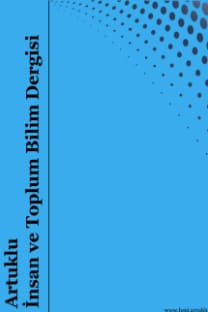William Shakespeare'in 66.Sonesinin Çevirisi Yapılan Üç Farklı Türkçe Metnindeki Etimolojik Kullanımlar Üzerine
Bu çalışmanın amacı, William Shakespeare’in 66.sonesinin Can Yücel, Talat Sait Halman ve Hasan İlhan tarafından Türkçe’ye çevirilerini; metinlerde kullanılan kelimelerin kökenlerini araştıran, incelemenin temel alanları olarak çevirilerde kullanılan kelime seçimleri ve tekrarları ele alan ve bu öğelerin çevirinin anlamı üzerindeki etkisini araştıran etimolojik ve dilsel açıdan incelemektir. Çalışmada aynı kaynak metnin üç farklı çevirisindeki çeviride tercih edilen kelimeler ve bunların etimolojik kökenleri ele alınarak, çeviri metinler üzerindeki etkileri incelenmiş ve karşılaştırılmıştır. Dilsel analiz biçemsel farklılıklar, ses ve anlam gibi farklı konularla ilgilense de bu çalışmada, 66.sonenin üç farklı Türkçe çevirisinde özellikle kelime kullanımları ve tercihleri temel inceleme alanları olarak belirlenmiştir. Bununla birlikte, kelimelerin etimolojik özelliklerinin de incelemeye alınmasıyla belirli kelimelerin kökenleri hakkında detaylı bir inceleme yapılmıştır. Böylece bu çalışma, aynı sonenin üç farklı çevirisindeki dilsel ve etimolojik incelemeyi sunarak, özellikle şiir çevirisi alanında çeviribilim çalışmalarına katkıda bulunmayı amaçlamaktadır.
Anahtar Kelimeler:
şiir çevirisi, etimoloji, tekrar, kelime seçimi, poetry translation, etymology, repetition, word choice
On The Etymological Aspect of Translation in Three Different Turkish Translated Texts of William Shakespeare’s 66th Sonnet
This study aims to examine the interconnected Turkish translations of William Shakespeare’s 66th sonnet by Turkish translators Can Yücel, Talat Sait Halman, and Hasan İlhan in a lingual and etymological perspective that explores the origin of the words used in texts, takes word choices and repetitions used in the translations as the main domains of analysis, and that intends to investigate their effects on the meaning of the translation. The word choices for translation in the three different translated versions of the same original work and their etymological origins are taken as the main fields of analysis in question, and their effects are examined and compared. Though lingual analysis is concerned with various subjects such as style variation, sound and meaning; in this study, particularly word usages and word choices are taken as the essential examining domains of the three Turkish translations of the 66th sonnet. In addition, some further analysis is made respecting the origins of specific words by taking their etymological characteristics into consideration. In this way, this study expects to contribute to translation studies in terms of poetry translation by putting forth the lingual and etymological examination of the same sonnet in three different translated versions.
Keywords:
şiir çevirisi, etimoloji, tekrar, kelime seçimi, poetry translation, etymology, repetition, word choice,
___
- Baleghizadeh, S., Naeim, M.Y. (2011). Promoting Vocabulary Retention Through Etymology Presentation. Journal of Theory and Practice in Education, 7(1), 111-123.
- Bellamy, E.J. (2012). English Poetry in the Sixteenth Century. British Renaissance Poets. (Ed. R. M. Canfield Reisman). Massachusetts: Salem Press.1-19.
- Cruttwell, P. (1969). The English Sonnet. London: Longmans, Green & Co. Ltd.
- Haas, W. (1962). The Theory of Translation. Philosophy, 37(141), 208–228.
- Halliday, M.A.K. (1961). Categories of the Theory of Grammar. On Grammar. Collected Works of MAK Halliday, 1, 95-105.
- Halliday, M.A.K. and Yallop, C. (2007). Lexicology. London and New York: Continuum.
- Halman, T.S. (2010). Soneler. İstanbul: Türkiye İş Bankası Kültür Yayınları.
- Harmon, W. and Holman, C.H. (1996). A Handbook to Literature. New Jersey: Prentice Hall.
- Hunter, J. C. (Ed.). (2010). Renaissance Literature an Anthology of Poetry and Prose. West Sussex: Wiley-Blackwell.
- Jones, F. (2011). Poetry Translating Expert Action. Amsterdam: John Benjamins.
- İlhan, H. (2008). William Shakespeare: Soneler. Ankara: Alter Yayıncılık.
- Lever, J.W. (Ed.). (1988). Sonnets of the English Renaissance. London: The Athlone Press.
- McCormick, P., Post, W., Anderson, Q., Harrison, G.B., Priestley, J.B., Gurney, A.R. et al. (1979). Adventures in English Literature. New York: Harcourt Brace Jovanovich, Inc.
- Peterson, D.L. (1990). The English Lyric from Wyatt to Donne. East Lansing: Colleagues Press.
- Pfister, M. (2010). Route 66 and No End: Further Fortunes of Shakespeare’s Sonnet 66. Linguaculture, 2, 39-50.
- Shakespeare, W. (2002). The Complete Sonnets and Poems. (Ed. C. Burrow). Oxford: Oxford University Press.
- Üstün Kaya, S. (2020). 66. Sone veya Sonnet 66: Karşılaştırmalı Bir Çeviri Analizi. Diyalog 2020/ Sonderausgabe: 85 Jahre Germanistik in der Türkei, 85, 185-194.
- Yücel, C. (2005). Vacgeçtim Bu Dünyadan. Antalya: Akdeniz Yayınevi.
- Waller, G.F. (2012). William Shakespeare. British Renaissance Poets. (Ed. R. M. Canfield Reisman). Massachusetts: Salem Press. p.188-199.
- Zubareva, N.B. (2017). W. Shakespeare – B. Pasternak – D. Shostakovich. Sonnet 66 (The Question of Artistic Translation). The Turkish Online Journal of Design, Art, and Communication, 4, 685-692.
- Yayın Aralığı: Yılda 2 Sayı
- Başlangıç: 2016
- Yayıncı: Mardin Artuklu Üniversitesi
Sayıdaki Diğer Makaleler
Ergül KODAŞ, Hale TÜMER, Çağdaş ERDEM, Abdullah BİLEN, Charlotte LABEDAN KODAS, Bahattin İPEK, Mübarek İPEK, Rıdvan YILDIZ, Bülent GENÇ
Keçilerin Evcilleşme Süreci ve Tenneesse Keçileri
Irak Türkmen Türkçesi Amerli Ağzının Ses Bilgisine Dair Notlar
Mubeen Shaheen Ibrahım IBRAHIM
Kırım Harbi ile Herat Meselesinde Osmanlı-İran İlişkileri (1853-1857)
Orta Çağ’da Paralı Askerliğe Geçiş Denemeleri: İngiltere Örneği
Habeş-rû Bir Dilber-i Yemen: Kahve ve XIX. Yüzyılda Yazılmış “Kahve” Redifli Beş Gazel
